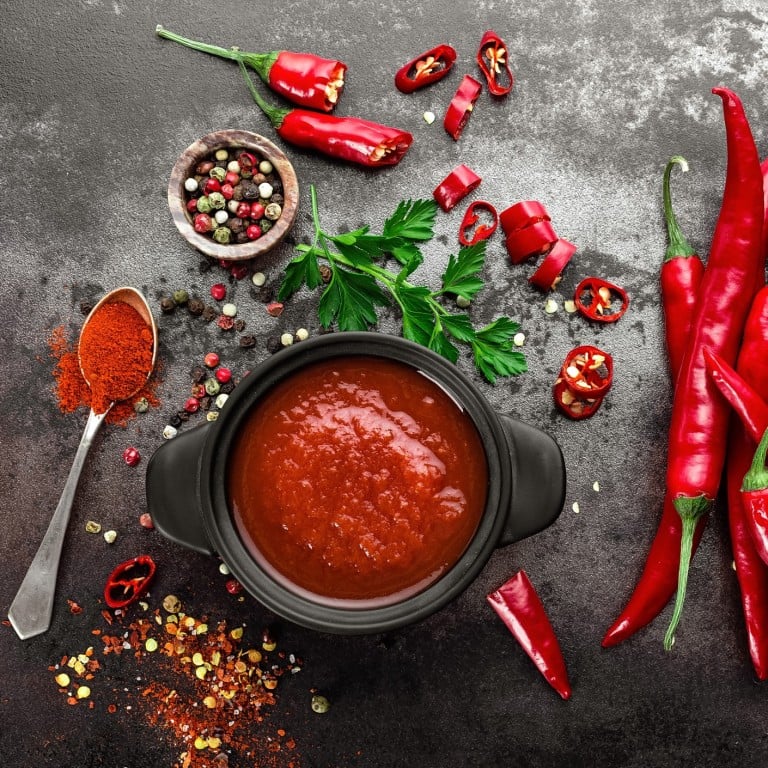How hot can you take your chillies – and are they bad for your health?

A recent gastronomy trip to Sichuan that consisted of Chongqing hotpots and savoury Sichuan dishes like hot and sour glass noodles got me fascinated about chilli peppers. The burning sensation experienced was unpleasant at first, but the more I indulged in spicy dishes, the more I craved the heat. What is the science behind the love-hate relationship people have with chillies?

Botanically a fruit but consumed as a vegetable, chilli peppers are cultivated and enjoyed around the globe where they are primarily used to add flavour, colour, aroma and “heat” to culinary dishes. People have varying levels of tolerance to the spiciness emitted by the peppers; some get teary and sweaty while others resonate with the Chinese proverb, “no spice no joy”.
Botanically a fruit but consumed as a vegetable, chilli peppers are cultivated and enjoyed around the globe where they are primarily used to add flavour, colour, aroma and “heat” to culinary dishes
What is your choice of hotpot soup base?
How hot can you go?
Capsaicin, a natural compound found in the fruit, is what causes the burning hot sensation experienced by the palette. The degree of heat present in the peppers also differs among the types.
To measure the heat level of chillies, the Scoville scale, which was developed by the American pharmacist Wilbur Scoville, standardises the pungency in Scoville Heat Units (SHU). For example, bell peppers have no heat, while habanero peppers have a heat ranging from 100,000 to 350,000.

So where do Chinese peppers (also known as Tien Tsin peppers), which are widely used in Sichuan and Hunan cuisine, rank?
Ding’s Club: where old-style Chinese cuisine wins hearts of Hongkongers
Various sources suggest Tien Tsin peppers have a heat level of 50,000 to 75,000 SHU. Its spiciness is comparable to Thai peppers, which range from 50,000 to 100,000 SHU.
If you think these Asian chilli peppers are not hot enough, then you may want to challenge yourself to try the Carolina Reaper, which has a scorching heat of up to 2.2 million SHU.
How new chef at Banyan Tree in Seoul is mixing things up
The distinctive and natural flavours present in the varying types of chilli peppers also determine how chilli peppers are used in the cuisines of different cultures. For example, Mexican cuisine typically uses fresh jalapeño peppers to make salsa and jalapeño cornbread while the neutrally flavoured cayenne peppers are dried and crushed into hot pepper flakes to use as a condiment for adding flavour to dishes.
Is it healthy?
Beyond the heat, chilli peppers may bring some health benefits.
The likelihood of overeating is reduced and consequently the number of calories consumed also decreases
Whole chilli peppers are naturally rich in vitamin C, an antioxidant which is responsible for keeping our immune system healthy and for growing and repairing our skin, teeth, bones and other tissues. They are also a good source of vitamin B6, which helps with producing haemoglobin to carry oxygen in the blood. Minerals such as iron, potassium and magnesium are also present, which are responsible for carrying oxygen throughout the body, regulating the body’s fluid levels and playing a role in forming bones and teeth, respectively.
While some research suggests it is questionable that eating chilli peppers may promote weight loss as a result of increasing one’s metabolism, the burning sensation experienced may help in managing your weight.
Since chilli peppers are spicy hot, they may make you pause in between each bite by giving your brain more time to realise the stomach is getting full. The likelihood of overeating, therefore, is reduced and consequently the number of calories consumed also decreases. Over time, weight loss can occur as a result of eating less.
It can even make you happy. For those with a high tolerance for capsaicin, consumption of chillies can trigger the brain to release endorphins, which creates the notion of pleasure.
On the flip side, if the pain receptors within the mucous membranes of your mouth are insensitive to the discomfort caused by capsaicin, adding chilli peppers to your food will definitely not help you shed a few pounds. However, adopting healthy lifestyle habits, such as engaging in regular physical activity, will hep you lose weight.
Gins with a twist: why distillers are giving juniper berries a makeover
Myth #1: too many chillies will upset your stomach
Wrong. If you are a heat seeker who cannot live without a kick of heat in foods, here is some good news for you: eating chilli peppers does not cause an upset stomach.
Unless you plan to take part in a chilli pepper-eating contest where you will be gobbling down unusually large quantities of chilli peppers, there is nothing to worry about.
Myth #2: the seeds are the source of the spice
Wrong again. It’s actually the pith. When you find you cannot handle the heat, remove the pith of the fresh chilli peppers, as this is where capsaicin is mostly concentrated. Removing the seeds may also help as their outer surface may have been in contact with the pith.
When to eat with caution
If you live with irritable bowel syndrome (IBS), the amount of chilli peppers included as part of meals should be limited, as you may experience more abdominal cramps and diarrhoea than usual.
Unfortunately, with chilli flakes, pastes, powders and oils, there is nothing much you can do to prevent the burning sensation in your mouth other than going easy with the condiments.
Otherwise, spice away!
Want more stories like this? Sign up here. Follow STYLE on Facebook, Instagram, YouTube and Twitter

Why do people crave the burning sensation that chillies provide in spicy food, and are there any health benefits?